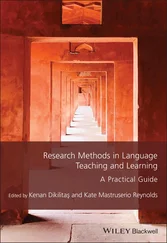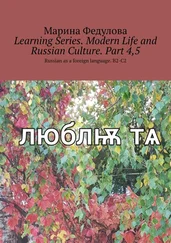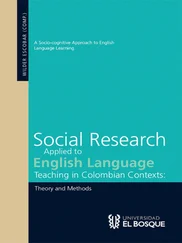When you have a partner on stage you come up against a whole new set of problems to do with listening and communicating. Does your partner understand what you understand? Do you both share the same perception of where you are and who you are? What is often difficult to realize at this stage is that it matters little whether your impro works or not – in other words whether you both actually know what you are doing. What matters more is how you listen and communicate with each other – and negotiate your misunderstandings. (…) How do you live your life on stage? What do you do when you realize your partner has not the same misunderstanding? It’s hard enough relating to your partner; you also shouldn’t forget the audience and you need to get a sense of the story that is unfolding. You easily get lost in it all. (Interview 6)
What becomes increasingly clear to the participants in the course of this work is that this feeling of ‘being lost’, of having problems, can offer the most poignant and enjoyable moments, if lived out fully. A line that Gladwell constantly repeats during these improvisations is, “Stay with the problem”. Those improvisations that become most enjoyable to watch are often those in which the clowns’ living together on stage with a single problem becomes the fulcrum on which an entire story seems to hinge. Living with the problem, learning to enjoy the problem, is an essential element of clowning and an aspect which constantly recurs in the feedback letters.
A related experience has to do with the unexpected ‘accidents’ that often seem to occur during the improvisations. Watching how the clown or clowns spontaneously respond to such accidents can become a highlight of an entire improvisation. Both the feedback in the workshops as well as the written responses to the research inquiry make clear that this learning ‘to enjoy a problem’, ‘to be glad about the accidents’ was a completely new and liberating feeling for many participants, which often led to sustained personal reflections about their attitudes towards teaching and life.
6.4.5 Exercises in Groups of Three or More
After the first solo improvisations and the improvisations in pairs, the next step to larger groups of three is, in comparison, a relatively small and manageable one. At this point, new structures are involved. For the first time there is a clear theme and structure given to the improvisation within which the participants are improvising together.
The improvisation called The Siamese Twins bears clear relations to the imitation exercises in the warm-ups and to the partner improvisations insofar as two participants who come into the room one after the other suddenly discover that they’re doing exactly the same things. Trying to imitate the other without knowing or planning what is going to happen next clearly presents a number of challenges and problems, all very much in the spirit of clowning. After a few minutes of the twins attempting to deal with their ‘sameness’, a third participant who does not know that they will be there, enters the stage – in turn surprising the ‘twins’. The discovery of the others creates very rich possibilities for living through and enjoying the manifold problems which emerge.
The improvisation Theatrical Audition is also often done with three participants and involves Gladwell directly in the task as a kind of participant/facilitator. Three clowns present themselves as a company of actors auditioning for a director/producer (Gladwell). This theme allows for the theatrical convention of ‘the play within a play’. However, through their eye contact with the audience, along with the fact that they actually have no idea what play they are auditioning with, this exercise clearly remains within the domain of clowning. That Gladwell as the producer has a vast repertoire of appropriate problems and difficulties for this troupe of actors also adds a great deal to the dynamics, energy and humour of this situation.
6.5 The End of the Workshops
There are two kinds of endings to the workshops. The one that always occurs involves sitting around in a circle for about 15–20 minutes and being given the opportunity to say something briefly to each other and to Gladwell. (There are also anonymous feedback sheets handed in at the end of each English Week ). In contrast to the many lengthier letters which I was later to receive from participants, the verbal feedback given at the end of the workshops I attended was generally quite short. (In the English Week workshops, this last session occurs the morning after a very late social evening, so there is often a general feeling of fatigue.) The following comments, taken verbatim from the participants at the end of the English Week 2004 , are also representative of statements which I heard at the end of the other workshops I attended:
I’m the one who has to have plans. I got the experience that it was OK for me not to have plans. It was completely liberating for me. It was great!
It was new for me going into the empty space, trusting something will happen. Living in the present. Going out with nothing.
I’ve learned to bear the eye contact with the audience. They’re watching you and you have to bear it.
We have grown into a big family in such a short time. You guided us so gently. The most important thing is that nothing can go wrong.
I liked the lightness. It was astonishing to see in what a short time such developments took place.
Clowning for me is the moment of truth. Having the feeling you don’t have borders. Also being yourself and everybody else at the same time. Not really paying attention. I’ll take everything with me and enjoy all the moments of remembering our work.
Somehow strange. It was very touching for me. It’s nice to be on stage. It felt good. Afterwards, it will be hard to do it again.
I loved all these games when everybody’s doing it – but to do it alone…
The second ‘ending’ which does not necessarily occur in all of his courses, but which is a mainstay of his English Week courses, is the final solo improvised performance in front of the entire conference. In the final plenary session of the English Week , all the different artistic groups usually present excerpts from their work, which may include dramatic scenes, poetry readings, and group or individual stories. A number of new participants confided to me that if they had known at the beginning of the week that they were going to have to improvise alone in front of an entire conference with more than a hundred fellow English teachers, they would have immediately switched groups! Some participants who had been to previous English Weeks and knew that this was going to happen wrote that it was often their fear of having to do this that had made it so difficult for them to join the clowning group until this point, despite the fact that they had very much enjoyed seeing others doing this final performance in previous years.
Each participant in the clowning group does a simple crossing . Entering from the sides of the large plenum room, initially hidden behind large screens, each clown with his or her own chosen costume and red nose crosses individually in front of the entire room just walking from one side to the other; having by this time learned that the only way to be sure that something interesting will happen along their way is to not have the slightest idea beforehand of what this something could possibly be.
7 Responses to the Research Inquiry
7.1 Feedback Responses: Breakdown According to Course
From the total of 122 participants who had been approached, there were 55 responses to the research inquiries.235 Participants had taken clowning courses within the frameworks of the following programs:
Читать дальше












